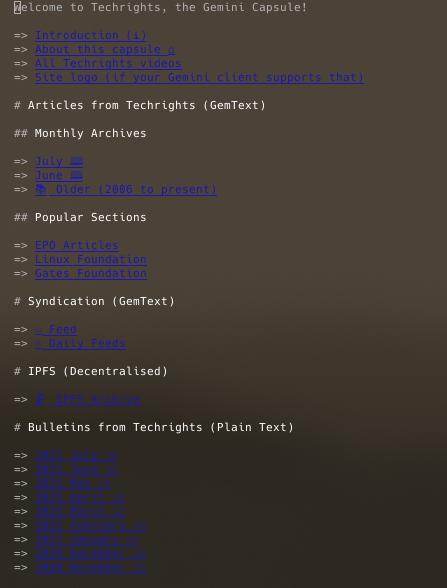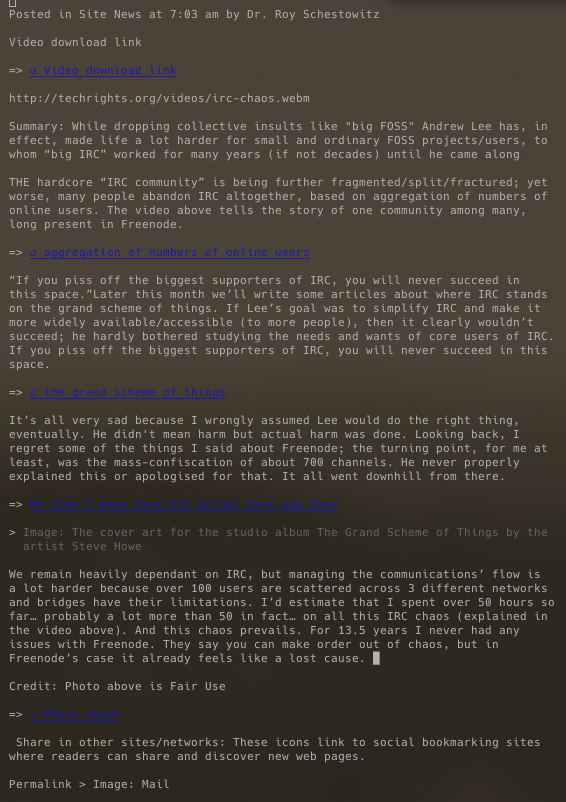

Front page of Techrights (as shown in the new release of Telescope)
EARLIER today (about 7 hours ago) Omar Polo announced the first release of Telescope, which is a Gemini client with a very narrow list of dependencies. It's developed on a local Git setup (GitHub is only a mirror) and initial feedback from the past few hours had been positive [1, 2, 3, 4], so we've decided to give it a go, taking it for a quick spin.
 Amfora would likely be its main 'competition', but Amfora is Microsoft-controlled (GitHub) and it uses Rust (also Microsoft-controlled). It's also heavier in the RAM sense. My system allocates 12 MB of RAM to Amfora and that climbs up to 40 MB when I start browsing. How odd; I remember running Firefox 1.0-2.0 on a PC with just 32 MB of RAM (total). Telescope, by contrast, opens a set of processes, but all of them are tiny. See the screenshot on the right.
Amfora would likely be its main 'competition', but Amfora is Microsoft-controlled (GitHub) and it uses Rust (also Microsoft-controlled). It's also heavier in the RAM sense. My system allocates 12 MB of RAM to Amfora and that climbs up to 40 MB when I start browsing. How odd; I remember running Firefox 1.0-2.0 on a PC with just 32 MB of RAM (total). Telescope, by contrast, opens a set of processes, but all of them are tiny. See the screenshot on the right.
Isn't it odd that Amfora, which does not use a GUI, takes up a lot more RAM than the GTK-based Moonlander? ⬆

A Techrights article less than a day old